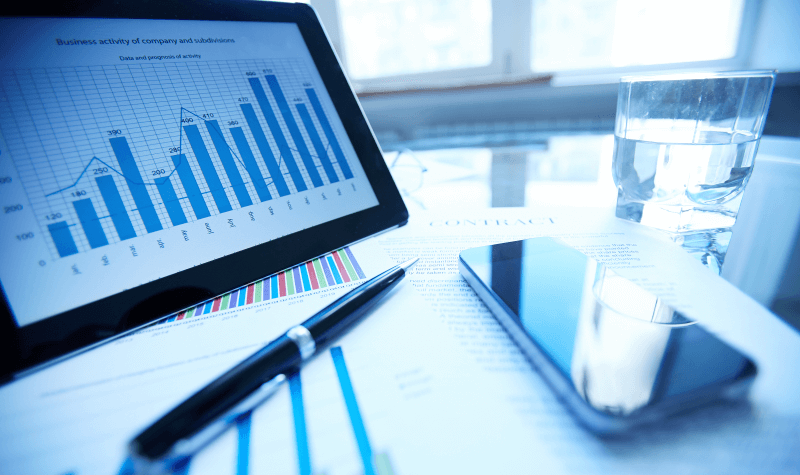
-
DURATION8 WEEKS
-
SUBJECT AREACircular Business Models: Reuse and recycle
-
COURSE LEVELSecond Cycle
-
CREDITS0.0 HP
-
INSTITUTIONREEDEAM
-
STUDY TYPEDistance
-
START DATE2025-09-22
-
END DATE2025-11-11
COURSE DESCRIPTION
Product development that efficiently contribute to reduction of material use and waste is key to successful transition towards sustainability. The aim of the course is to give the student a deeper understanding of product development for circular flows. Through this course, you will explore the critical relationship between sustainable practices and product development strategies, preparing you to contribute meaningfully to the circular economy and sustainable development initiatives.
In this course, you will be introduced to systematic working methods for product development in practical contexts, with a specific focus on innovation and creativity. The goal of the course is to provide a deep understanding of the application of various practices in different types of product development work. The objective is for course participants to enhance their ability to understand and apply product development processes in the manufacturing industry and gain deeper insights into how these processes relate to organizations' innovation and business strategies in order to achieve circular flows, resilience, and sustainability.
The teaching consists of self-study using course literature, films, and other materials through an internet-based course platform, as well as scheduled webinars and written reflections. There are no physical meetings; only digital online seminars are included.
Study hours
40 study hours; four seminars and self studies.
Seminar 1: September 22nd, at 1500-1600
Seminar 2: October 6th, at 1500-1600
Seminar 3: October 20th, at 1500-1600
Seminar 4: November 10th, at 1500-1600
Target Group
This course is primarily intended for engineers in management or middle management positions within industry, whether they are recent graduates or individuals with extensive experience. The course is suitable for individuals with backgrounds in mechanical engineering, industrial engineering management, or similar educational background.
Entry Requirements
To be eligible for this course, participants must have completed courses equivalent to at least 120 credits, with a minimum of 90 entry Requirement credits in a technical subject area, with at least a passing grade, or equivalent knowledge. Proficiency in English is also required, equivalent to English Level 6.
Educational package in circular economy
The course Product/production and business development for circular flows is an introduction of the educational package starting again spring 2024 and will also run spring 2026. This course: Product development for circular flow together with Business developmetent for circular flow (starting January 13) Product development for circular flows (starting April 28) are free standing independent courses that build on knowledge in the field.
courses you may also like

Skills in development work are becoming increasing importance in professional life. This course offers you the opportunity to develop knowledge and skills in product development, production development, and business development, as well as the relationship between these areas. You will be introduced to systematic working methods for product development, production development, and business development, with a specific focus on innovation and creativity in practical contexts. The goal of the course is to provide a deep understanding of the application of various processes in different types of development work. The objective is for course participants to enhance their ability to understand and apply development processes and gain deeper insights into how these processes relate to organizations' innovation and business strategies in order to achieve circular flows, resilience, and sustainability in the manufacturing industry. The teaching consists of self-study using course literature, films, and other materials through an internet-based course platform, as well as scheduled webinars and written reflections. There are no physical meetings; only digital online seminars are incuded. Course StartThe course starts in the spring of 2026, more information will follow.Applications are made via www.antagning.se between 2025-09-15 and 2025-10-15. Study hours 40 hours distributed over 7 weeks. Target GroupThis course is primarily intended for engineers in management or middle management positions within industry, whether they are recent graduates or individuals with extensive experience. The course is suitable for individuals with backgrounds in mechanical engineering, industrial engineering management, or similar educational background. Entry RequirementsTo be eligible for this course, participants must have completed courses equivalent to at least 120 credits, with a minimum of 90 ntry Requirementscredits in a technical subject area, with at least a passing grade, or equivalent knowledge. Proficiency in English is also required, equivalent to English Level 6. Educational package in circular economyThis course Product/production and business development for circular flows is an introduction of the educational package. The courses Business development for circular flow, Product development for circular flows and Production for cirkular flows are free standing independent courses that build on knowledge in the field. Link to Syllabus Please note that the number of participants for this course is limited, so we encourage you to apply as soon as possible!

Business models that efficiently contribute to reduction of material use and waste are key to successful transition towards sustainability. This course has a particular focus on the interplay between business models, product innovation and production processes. Through this course, you will explore the critical relationship between sustainable practices and business strategies, preparing you to contribute meaningfully to the circular economy and sustainable development initiatives In this course, you will be introduced to systematic working methods for business development in practical contexts, with a specific focus on innovation and creativity. The goal of the course is to provide a deep understanding of the application of various business model practices in different types of development work. The objective is for course participants to enhance their ability to understand and apply business development processes in the manufacturing industry and gain deeper insights into how these processes relate to organizations' innovation and business strategies in order to achieve circular flows, resilience, and sustainability. The teaching consists of self-study using course literature, films, and other materials through an internet-based course platform, as well as scheduled webinars and written reflections. There are no physical meetings; only digital online seminars are included. Study hours 40 hours distributed during 6 weeks in spring 2026. Starting dateThe course starts in the spring of 2026, more information will follow.Applications are made via www.antagning.se between 2025-09-15 and 2025-10-15. Webinar 1: Webinar 2: Webinar 3: Webinar 4: Target GroupThis course is primarily intended for engineers in management or middle management positions within industry, whether they are recent graduates or individuals with extensive experience. The course is suitable for individuals with backgrounds in mechanical engineering, industrial engineering management, or similar educational background. Entry RequirementsTo be eligible for this course, participants must have completed courses equivalent to at least 120 credits, with a minimum of 90 entry Requirement credits in a technical subject area, with at least a passing grade, or equivalent knowledge. Proficiency in English is also required, equivalent to English Level 6. Educational package in circular economyThis course Business development for circular flows is part of an educational package in circular economy. The other courses are Product/production and business development for circular flows (starting spring 2026), Product development for circular flows (starting August 28th 2025) and Production development for circular flows (starting October, 6th 2025)

Production development that efficiently contribute to reduction of material use and waste are key to successful transition towards sustainability. The aim of the course is to give the student a deeper understanding of production development for circular flows. Through this course, you will explore the critical relationship between sustainable practices and production development strategies, preparing you to contribute meaningfully to the circular economy and sustainable development initiatives. In this course, you will be introduced to systematic working methods for production development in practical contexts, with a specific focus on innovation and creativity. The goal of the course is to provide a deep understanding of the application of various practices in different types of product development work. The objective is for course participants to enhance their ability to understand and apply production development processes in the manufacturing industry and gain deeper insights into how these processes relate to organizations' innovation and business strategies in order to achieve circular flows, resilience, and sustainability. The teaching consists of self-study using course literature, films, and other materials through an internet-based course platform, as well as scheduled webinars and written reflections. There are no physical meetings; only digital online seminars are included. Study hours 40 study hours; four seminars and self studies. Seminar 1: October 6th, at 1215-1300Seminar 2: October 13th, at 1215-1300Seminar 3: October 27nd, at 1215-1300Seminar 4: November 17th, at 1215-1300 Target groupThis course is primarily intended for engineers in management or middle management positions within industry, whether they are recent graduates or individuals with extensive experience. The course is suitable for individuals with backgrounds in mechanical engineering, industrial engineering management, or similar educational background. Entry reqirementsTo be eligible for this course, participants must have completed courses equivalent to at least 120 credits, with a minimum of 90 entry Requirement credits in a technical subject area, with at least a passing grade, or equivalent knowledge. Proficiency in English is also required, equivalent to English Level 6. Educational package in circular economyThis course Production development for circular flowis part of an educational package in circular ecconomy. The other courses are Product/production and business development for circular flows (starting spring 2026), Business development for circular flows (starting spring 2026), Product development for circular flows (starting August 28th 2025).

This course has an English version. Look for course with title "Why choose wood for the next high rise building?" KursbeskrivningOlika typer av biomaterial (t.ex. trä) är mycket viktiga i utmaningen att avkarbonisera byggmiljön och minska koldioxidavtrycket för byggnader och infrastruktur genom att ersätta material som stål och cement som har höga koldioxidutsläpp. Samtidigt får vi inte glömma bort att biologisk mångfald, natur och sociala värden i våra skogar är viktigt att behålla samtidigt som skogsbruk bedrivs. I kursens 13 moduler tas skogsbrukets kretslopp upp inklusive avverkningsmetoder, biologisk mångfald, skogsskötsel, logistik, skogens roll i klimatomställningen, kolinlagring, miljöfördelar med att bygga flervåningshus i trä mm. Syftet är att ni som deltar i kursen ska få en gemensam förståelse av det svenska skogsbruket för att ni sen ska kunna fatta välgrundade beslut om materialval vid nästa byggprojekt. KursperiodKursen kommer att vara aktiv under 3 år. InnehållSkogshistoria: Skogens nyttjande i Sverige genom historienSkogsbruksmetoder och skogsskötselSkogsföryngringVirkets egenskaperMätning av skog och virkeSkogsträdsförädling: nutid och framtidSkogens kolbalans och klimatetAffärsmodeller och marknadsutveckling: Fokus flervåningshus med trästommarNaturvård och biologisk mångfald i skogen Kursens uppläggKursen är helt digital med förinspelade föreläsningar. Du kan delta i kursen i din egen takt. Modulerna avslutas med quiz där du kan testa hur mycket du har lärt dig. Du kommer få kunskap omEfter avslutad kurs kommer du att ha lärt dig mer om olika skogliga begrepp, förvärvat kunskap om skogens nyttjande i Sverige genom historien, ökat dina kunskaper om skogsskötsel och hur olika skogsskötselmetoder påverkar den biologiska mångfalden i skogen, lärt dig om skogsbrukets kretslopp – från föryngring till slutavverkning mm. Vem vänder sig kursen till?Den här kursen är tänkt för dig som är yrkesverksam arkiktekt, anställd på kommun som arbetar med stadsplanering och byggande, verksam i bygg- och anläggningsbranschen samt verksam i andra relaterade yrken. Detta är en introduktionskurs och kommer att bidra till en kompetenshöjning i hela byggsektorns ekosystem vilket ökar branschens internationella konkurrenskraft, samtidigt som det ger viktiga förutsättningar för utvecklingen av framtidens hållbara, vackra och inkluderande städer. Eftersom kursen är öppen för alla hoppas vi att fler grupper, exempelvis studenter, doktorander, skogsägare och andra med skogsintresse tar kursen, tar del av inspirerande föreläsningar där vetenskaplig kunskap som producerats huvudsakligen inom SLU presenteras.För mer information kontakta kurskoordinator dimitris.athanassiadis@slu.se

Vatten är den i särklass vanligaste miljön på jorden och vad som sker i haven påverkar allt liv på jorden. Även om människan inte bor i eller på vatten så nyttjar vi många ekosystemtjänster från vatten som matproduktion, transporter, elförsörjning och rekreation, och därmed påverkar eller förstör ekosystemen. För att kunna fortsätt nyttja resurser från hav och vatten eller utveckla nya värdekedjor krävs en omställning mot resursutnyttjande utan att riskera viktiga ekosystemtjänster. I denna kurs kommer du lära dig mer om akvatiska ekosystem och hur vi nyttjar och påverkar dem, men också hur resursutnyttjandet kan bli hållbart. Innehåll Grundläggande vattencykel & akvatisk ekologi Ekosystemtjänster från hav och vatten Livsmedelsproduktion, fiske & vattenbruk Havs och vattenplanering "Nature-based solutions", nya råvaror och tjänster Klimatförändringar och framtidens vatten och hav Kursens uppläggKursen ges som förinspelade lektioner och läses i egen takt. Kursen innehåller självrättande quiz för att du ska kunna kolla att du har uppnått inlärningsmålen. För att komma vidare i kursen, och kunna skriva ut ett kursintyg när du är färdig, måste du bli godkänd på quizzarna. Du kommer få kunskap omKursen ger grundläggande kunskaper om akvatiska ekosystem, ekosystemtjänster och hot. Kursen ger även kunskaper och färdigheter för att förstå vad som krävs och kan bidra till en blå omställning av resurser i vatten. Efter genomgången kurs kommer du kunna: redogöra för biologiska samband och olika ekosystemtjänster från akvatiska miljöer och dess betydelse för mänskliga samhällen, analysera hot och målkonflikter mellan olika nyttjanden av akvatiska resurser, förstå hur framtida diversifiering av vatten- och havsanvändning kan skapa en hållbar bioekonomi. Vem vänder sig kursen till?I första hand yrkesverksamma eller personer intresserade av att bli verksamma inom blå näringarna, som fiskare, vattenodlare, turistnäring, eller andra företagare inom den blå sektorn. men även vatten- och fiskerättsägare. Kursen är även relevant för tjänstemän i offentlig förvaltning (kommun-myndigheter) och journalister eller intresserad allmänhet.Kursen ges i huvudsak på svenska.

This course has a Swedish version. Look for a course with the title "Varför välja trä vid nästa byggprojekt?" Course DescriptionDifferent types of biomaterials (e.g., wood) are crucial in the challenge of decarbonizing the built environment and reducing the carbon footprint of buildings and infrastructure by replacing materials like steel and cement, which have high carbon dioxide emissions. At the same time, we must not forget that it is important to preserve biodiversity and the social values of our forests. The 13 modules of the course cover many forestry related subjects, including harvesting methods, biodiversity, forest management, logistics, the role of forests in the climate transition, carbon storage, environmental benefits of multi-story buildings with wood, and more. The goal is that participants will gain a shared understanding of Swedish forestry so that they can make well-informed decisions about material choices for their next construction project. Course PeriodThe course will be active for 3 years. ContentForest history: The utilization of forests in Sweden throughout the past yearsForestry methods and forest managementForest regenerationWood propertiesForest mensurationForest tree breedingThe forest's carbon balanceBusiness models and market development: Focus on wood high risesNature conservation and biodiversity in the forest Course StructureThe course is fully digital with pre-recorded lectures. You can participate in the course at your own pace. Modules conclude with quizzes where you can test how much you have learned.You will learn aboutUpon completion of the course, you will have learned more about various forest-related concepts, acquired knowledge of forest utilization in Sweden throughout the past years, increased your understanding of forest management and how different management methods affect biodiversity in the forest, and learned about the forestry cycle—from regeneration to final harvesting, etc. Who is this course for?This course is designed for professionals such as architects, municipal employees working with urban planning and construction, individuals in the construction and civil engineering sector, and those in other related fields. This is an introductory course and will contribute to upskilling of the entire construction sector, thereby increasing the industry's international competitiveness while also providing important prerequisites for the development of future sustainable, beautiful, and inclusive cities. Since the course is open to everyone, we hope that more groups, such as students, doctoral candidates, forest owners, and others with an interest in forestry, will take the course and engage with inspiring lectures where scientific knowledge primarily produced within SLU (Swedish University of Agricultural Sciences) is presented.For more iformation contact course coordinator dimitris.athanassiadis@slu.se